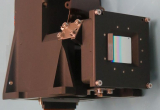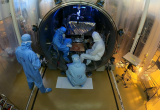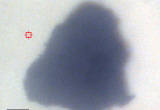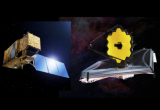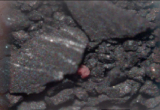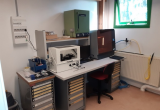A galaxy protocluster dating from when the Universe was the most active in star formation has been discovered. It forms many stars at a pace not reproduced by current models, and it will eventually evolve into a superstructure.
You are here
Archive
The optical head of the visible and infrared imaging spectrometer MAJIS (Moons And Jupiter Imaging Spectrometer) has been delivered to ESA and Airbus for mechanical and electrical integration on board the ESA JUICE satellite (JUpiter ICy moon Explorer).
The Optical Head (OH) of the MAJIS (Moons and Jupiter Imaging Spectrometer) instrument which was delivered to IAS in mid-August has been calibrated at the IAS calibration facilities. This crucial stage in the life of a space instrument allows us to assess the performances of the instrument in conditions very close to those it will encounter in space, and to make the final adjustments to its control with the electronics spare (the electronic flight unit having already been delivered).
The MAJIS project has reached an important milestone by delivering the main electronics (ME) to Airbus for integration into the heart of the satellite in order to be best protected from Jupiter radiation. This box allows to drive the instrument, to compress and to format the science and auxiliary data thanks to the on-board software developed by the IAS in partnership with the CNES.
The Astrochemistry and Origins team at IAS, in collaboration with the SMIS beam-line of the SOLEIL synchrotron, is starting the analysis of several Ryugu micrometric grains, in particular by Fourier transform infrared micro-tomography.
The INCLASS (Innovative Common Laboratory For Space Spectroscopy) LabCom was created between the IAS and the ACRI-ST company, for an initial period of four years. A LabCom is a common laboratory between a SME and a public research laboratory, supported by the ANR (French national research agency). INCLASS is the first LabCom involving astrophysics research teams.
Cédric Pilorget, Université Paris-Saclay assistant professor at IAS, has been named a junior member of the Institut Universitaire de France. This nomination will allow him to carry on his research in planetology, on quantifying mineral abundances on planetary and small body surfaces, and to prepare future space missions.
On 17 June 2021, the International Space Station (ISS) will fly over the Orsay campus of Université Paris-Saclay. To mark the occasion, a radio contact lasting approximately 10 minutes will be organised with Thomas Pesquet, live from the ISS. A unique opportunity to follow the conversation between the astronaut and secondary school and university students!
JAXA's Hayabusa2 mission carried out a collection, never accomplished before, of samples of a very primitive carbonaceous asteroid, and successfully brought them back to Earth in early December 2020. The samples are now stored in the “Curation Facility” of ISAS, in Sagamihara (Japan), in ultra-clean chambers, in a controlled atmosphere, where initial analyzes are being carried out. These include a pioneer characterization by infrared hyperspectral microscopy, using the MicrOmega instrument developed at IAS, and integrated into the Curation Facility.
The design office / workshop is equipped with a new prototyping workshop !
In order to be able to quickly produce prototypes and improve our responsiveness during the development phases, the IAS is acquiring two new facilities: a 3D printer and a 5-axis digital milling machine. This equipment allows our laboratory to slowly enter the era of digital manufacturing while developing new skills.




